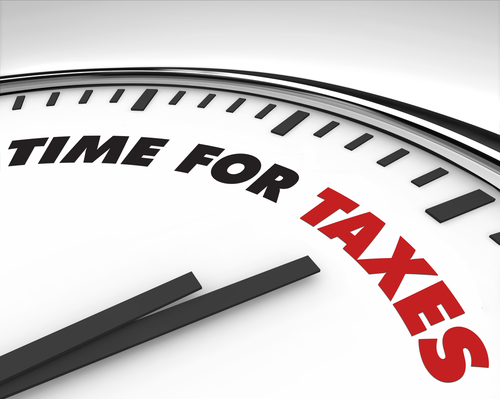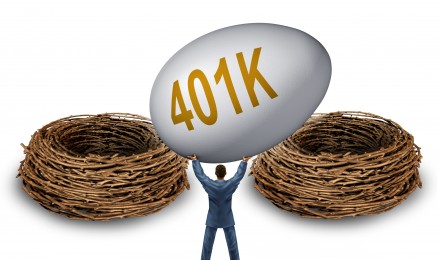Above-the-line tax deductions can make a big difference in reducing your tax bill. Make sure you go through your tax returns carefully to see if you are eligible for any of them. The Internal Revenue Code allows for “above-the-line” deductions that can be found on the bottom half of the first page of the 1040. There are 13 separate above-the-line deductions that can be reported on Part II of the 1040 for 2011, listed as follows:
Line 23, Unreimbursed Educator Expenses – All teachers and education professionals are allowed to deduct $250 worth of unreimbursed qualified education-related expenses paid out of pocket. Married couples filing jointly can deduct twice this amount.
Line 24, Certain Business Expenses of Reservists, Performing Artists and Fee-Basis Government Officials – A series of miscellaneous expenses that taxpayers in these three categories may claim. Form 2106 is required to compute these deductions.
Line 25, Health Savings Account Deduction – Taxpayers who have no access to group health coverage of any kind can open this type of account in conjunction with a high-deductible health insurance plan and deduct the amount they contribute to the account here. Form 8889 must be completed for this.
Line 26, Moving Expenses – As long as your new workplace is at least 50 miles further away from your old home as your previous location of employment, then you can deduct certain relocation expenses. These are computed on Form 3903.
Line 27, Deductible Part of Self-Employment Tax – Self-employed taxpayers can deduct half of their self-employment tax as reported on Schedule SE.
Line 28, Self-Employed SEP, SIMPLE and Qualified Plans – All contributions to these retirement plans are deducted here. The rules for these are outlined in Pubs. 560 and 517.
Line 29, Self-Employed Health Insurance Deduction – Self-employed taxpayers can deduct the cost of all premiums paid for health insurance. There is a worksheet on page 29 of the instructions for the 1040 and the rules are provided in Pub. 535.
Line 30, Penalty on Early Withdrawal of Savings – Any penalty such as for early withdrawal from a CD or other fixed income security that is listed on forms 1099-INT or 1099-OID can be deducted here.
Line 31, Alimony Paid – All alimony that is paid under a divorce decree is listed here. Rules for this deduction are in Pub. 504.
Line 32, IRA Deduction – All contributions to a traditional IRA are deducted here. The restrictions for this deduction are computed in the worksheet on pages 30 and 31 of the 1040 instructions. More information can be found in Pub. 590.
Line 33, Student Loan Interest Deduction – Use the worksheet on page 32 of the 1040 instructions to compute this amount or consult Pub. 970. This is one of the most common above-the-line deductions taken.
Line 34, Tuition and Fees – The amount that may be deducted for qualified educational expenses is computed on Form 8917.
Line 35, Domestic Production Activities Deduction – Qualified taxpayers can deduct up to 9% of their qualified expenses related to property construction, filmmaking or energy production. Instructions and details are found in Form 8903.
After these expenses have been deducted, the resulting figure is known as the taxpayer’s Adjusted Gross Income. For more information on above-the-line deductions, download the instructions for the 1040 form at www.irs.gov or consult your tax or financial advisor.
Above-the-line tax deductions can make a big difference in reducing your tax bill. Make sure you go through your tax returns carefully to see if you are eligible for any of them. The Internal Revenue Code allows for “above-the-line” deductions that can be found on the bottom half of the first page of the 1040. There are 13 separate above-the-line deductions that can be reported on Part II of the 1040 for 2011, listed as follows:
Line 23, Unreimbursed Educator Expenses – All teachers and education professionals are allowed to deduct $250 worth of unreimbursed qualified education-related expenses paid out of pocket. Married couples filing jointly can deduct twice this amount.
Line 24, Certain Business Expenses of Reservists, Performing Artists and Fee-Basis Government Officials – A series of miscellaneous expenses that taxpayers in these three categories may claim. Form 2106 is required to compute these deductions.
Line 25, Health Savings Account Deduction – Taxpayers who have no access to group health coverage of any kind can open this type of account in conjunction with a high-deductible health insurance plan and deduct the amount they contribute to the account here. Form 8889 must be completed for this.
Line 26, Moving Expenses – As long as your new workplace is at least 50 miles further away from your old home as your previous location of employment, then you can deduct certain relocation expenses. These are computed on Form 3903.
Line 27, Deductible Part of Self-Employment Tax – Self-employed taxpayers can deduct half of their self-employment tax as reported on Schedule SE.
Line 28, Self-Employed SEP, SIMPLE and Qualified Plans – All contributions to these retirement plans are deducted here. The rules for these are outlined in Pubs. 560 and 517.
Line 29, Self-Employed Health Insurance Deduction – Self-employed taxpayers can deduct the cost of all premiums paid for health insurance. There is a worksheet on page 29 of the instructions for the 1040 and the rules are provided in Pub. 535.
Line 30, Penalty on Early Withdrawal of Savings – Any penalty such as for early withdrawal from a CD or other fixed income security that is listed on forms 1099-INT or 1099-OID can be deducted here.
Line 31, Alimony Paid – All alimony that is paid under a divorce decree is listed here. Rules for this deduction are in Pub. 504.
Line 32, IRA Deduction – All contributions to a traditional IRA are deducted here. The restrictions for this deduction are computed in the worksheet on pages 30 and 31 of the 1040 instructions. More information can be found in Pub. 590.
Line 33, Student Loan Interest Deduction – Use the worksheet on page 32 of the 1040 instructions to compute this amount or consult Pub. 970. This is one of the most common above-the-line deductions taken.
Line 34, Tuition and Fees – The amount that may be deducted for qualified educational expenses is computed on Form 8917.
Line 35, Domestic Production Activities Deduction – Qualified taxpayers can deduct up to 9% of their qualified expenses related to property construction, filmmaking or energy production. Instructions and details are found in Form 8903.
After these expenses have been deducted, the resulting figure is known as the taxpayer’s Adjusted Gross Income. For more information on above-the-line deductions, download the instructions for the 1040 form at www.irs.gov or consult your tax or financial advisor.







